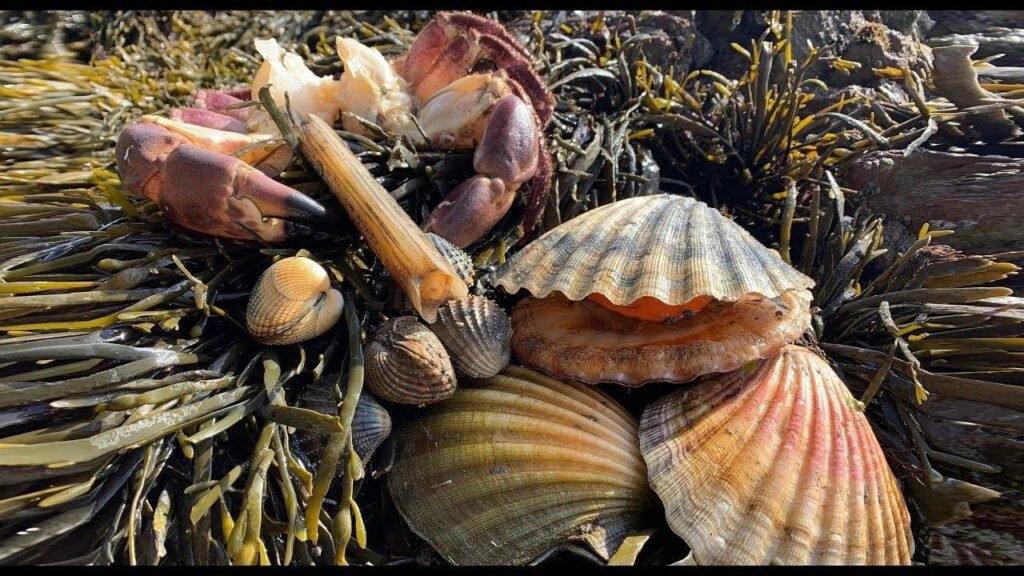Coastal foraging is a rewarding way to gather fresh, wild foods from the shore. However, once you’ve collected your bounty, the next step is knowing how to prepare and preserve these ingredients. Whether you’re dealing with shellfish, sea vegetables, or other coastal edibles, understanding the best cooking methods and preservation techniques will help you make the most of your foraging finds. To kickstart your journey, it’s essential to understand the fundamentals of coastal foraging, as this knowledge will enhance your culinary experience.
Cooking Coastal Finds
1. Shellfish Preparation
Shellfish such as clams, mussels, and oysters can be prepared in various ways:
- Steaming: This is a popular method for cooking shellfish. Place them in a pot with a small amount of water, cover, and steam until they open. Be sure to discard any that remain closed after cooking.
- Grilling: Grilling imparts a delicious smoky flavor. Simply place the shellfish directly on the grill or in a grill basket until cooked through.
- Raw: Some shellfish, like oysters, can be enjoyed raw. Make sure they are from clean waters and properly stored before consumption.
2. Cooking Sea Vegetables
Sea vegetables like kelp, dulse, and sea lettuce are versatile and can be used in many dishes:
- Soups and Stews: Add chopped seaweed to soups or stews for a nutritious boost. They can be added dried or fresh.
- Salads: Fresh sea lettuce can be used in salads, tossed with your favorite dressing for a refreshing meal.
- Snacks: Sea vegetables like dulse can be dried and eaten as a snack or added to dishes for extra flavor.
Preserving Your Harvest
1. Freezing
Freezing is one of the easiest ways to preserve shellfish and sea vegetables. Make sure to:
- Clean and Prepare: Clean your finds thoroughly before freezing. For shellfish, shuck them first, while sea vegetables should be rinsed and chopped.
- Blanching: For some sea vegetables, blanching in boiling water for a few minutes can help maintain their color and texture before freezing.
2. Drying
Drying is another effective method for preserving sea vegetables. Here’s how:
- Air Drying: Lay your sea vegetables out in a single layer in a cool, dry place, or use a dehydrator until they are fully dry.
- Storing: Once dried, store them in airtight containers to keep them fresh and prevent moisture from getting in.
3. Pickling
Pickling shellfish and some sea vegetables is an excellent way to enhance flavors while preserving them:
- Brine Solution: Create a simple brine with vinegar, water, and your choice of spices. Submerge the cleaned shellfish or vegetables in the solution and let them sit for a few days in the refrigerator.
- Canning: If you want a long-term solution, canning is an option, but make sure to follow proper canning procedures to ensure safety.
Cooking Tips for Coastal Foraging
Coastal foraging can yield an incredible variety of wild foods, from shellfish and seaweed to edible plants and small fish. However, to fully enjoy the nutritional and culinary benefits of these treasures from the shore, it’s important to know how to prepare and cook them properly. Here are some cooking tips for coastal foraging, to help you turn your wild harvest into delicious, sustainable meals.
1. Clean Your Foraged Foods Thoroughly
Before cooking any of your coastal finds, make sure to clean them thoroughly. Sand, salt, and debris can cling to shellfish and seaweed. For shellfish like mussels, clams, and oysters, rinse them under cold water and scrub the shells to remove any grit. If you’re working with seaweed, rinse it well to remove salt and sand before soaking it in fresh water.
Pro Tip: Soak shellfish in fresh, cold water with a pinch of salt for a few hours before cooking. This helps them expel any sand or dirt inside the shells, making for a cleaner and tastier meal.
2. Blanch Seaweed for Versatility
Seaweed is one of the most nutrient-rich foods you can gather while coastal foraging. To prepare seaweed for salads, soups, or stir-fries, blanch it quickly in boiling water for 30 seconds to 1 minute. This process enhances the color, softens the texture, and makes it easier to digest. After blanching, cool the seaweed in ice water to stop the cooking process, then drain and use in your dish.
Tip: Use seaweed in salads, as a garnish for seafood dishes, or as a nutritious snack when dried and roasted.
3. Steam or Grill Shellfish
Shellfish, such as clams, mussels, and oysters, are the stars of coastal foraging. One of the simplest and most delicious ways to cook them is by steaming or grilling. For steaming, place the cleaned shellfish in a pot with a little white wine, garlic, and herbs, then cover and steam for about 5-7 minutes or until the shells open. Discard any shellfish that do not open after cooking.
Grilling is another excellent method. Place oysters or clams directly on a hot grill, and when the shells pop open, drizzle with lemon juice or garlic butter for added flavor.
Pro Tip: For extra flavor, add aromatic herbs like thyme or parsley to your steaming liquid, or brush the shellfish with herb butter before grilling.
Conclusion
Cooking and preserving your coastal foraging finds allows you to enjoy the flavors of the ocean long after your foraging trip is over. By employing various cooking techniques and preservation methods like freezing, drying, and pickling, you can create delicious meals and snacks that celebrate the bounty of the shoreline. With the right skills and knowledge, your coastal foraging experience can be both satisfying and sustainable, bringing the essence of the sea into your kitchen.



More Stories
Mahakumbh: The Greatest Gathering on Earth
Savoring Traditions on Georgia’s National Day
Reasons to Visit Dubai Parks and Resorts